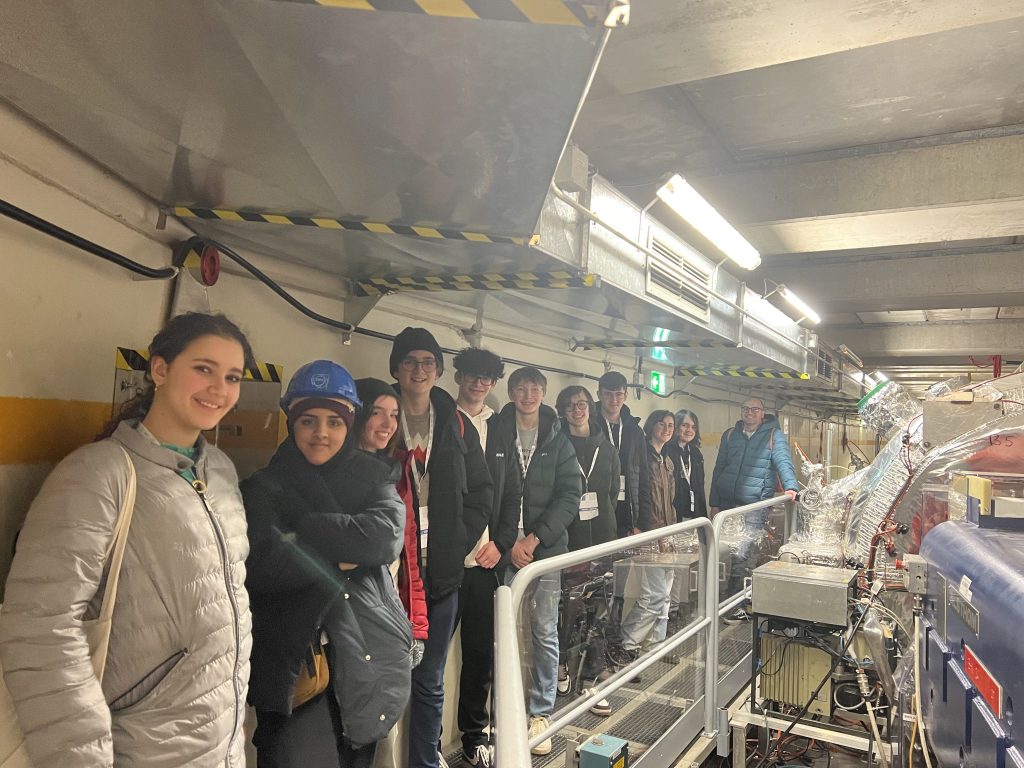Lola, an A Level Physics student, describes the recent trip she took to CERN with other students and teachers from Loreto College
 Physics is perhaps the science which we see the least applications for, the concepts are abstract and often hard to wrap our minds around. However CERN is perhaps the one location in which these theories can truly be tested, so it is obvious why so many global forces are willing to contribute towards CERN and all of its research. Therefore when the chance to visit CERN and see these intangible theories come to life was a many could not pass up this opportunity.
Physics is perhaps the science which we see the least applications for, the concepts are abstract and often hard to wrap our minds around. However CERN is perhaps the one location in which these theories can truly be tested, so it is obvious why so many global forces are willing to contribute towards CERN and all of its research. Therefore when the chance to visit CERN and see these intangible theories come to life was a many could not pass up this opportunity.
The LHC also known as the Large Hadron Collider, is a state of the art machine which creates millions of collisions, then information about these collisions is harvested, collected, and sent to research centres all around the world.
Have you noticed my lack of a specification about the result of these collisions? This is due to the fact that while physicists do know what to search for, they do not know exactly what it will look like, this is why all of this data is compiled and sent to research centres all over the world. This data is first stored in the CERN Data Center which not only showed the LHC was successful at its purpose, but that CERN stressed about reducing its ecological impact by using magnetic tape, an outdated memory storage device.
In the Antimatter Factory (funnily enough the name is highly accurate), antimatter was explored, and produced in negligible amounts, antimatter is a key yet unknown component which was a part of the Big Bang Theory, and while the information we gain about these particles might not improve our life quality instantly, this research has won a Nobel Price, and information about these particles has brought us closer to finding a perfect cure for cancer.
 The Swiss Plasma Center was perhaps more shocking as they experimented with plasma, these are particles whose temperatures surpassed the core of the Sun (created inside the Tokamak a machine built in the late 1900s), and while the Plasma Center’s main focus was researching qualities about plasma and its effect in the amount of energy produced, these are small steps in the measuring scale of how far developments with plasma have come, as for example France is currently building the ITER, the world’s largest fusion reactor and a similar but improved version of the Tokamak which will generate enough energy to eliminate the use of fossil fuels.
The Swiss Plasma Center was perhaps more shocking as they experimented with plasma, these are particles whose temperatures surpassed the core of the Sun (created inside the Tokamak a machine built in the late 1900s), and while the Plasma Center’s main focus was researching qualities about plasma and its effect in the amount of energy produced, these are small steps in the measuring scale of how far developments with plasma have come, as for example France is currently building the ITER, the world’s largest fusion reactor and a similar but improved version of the Tokamak which will generate enough energy to eliminate the use of fossil fuels.
Lastly, a big thanks to Mr Cowen, Mrs Grzegorzewski, and Dr Acomb who organised the trip and ensured we were all able to enjoy Switzerland.